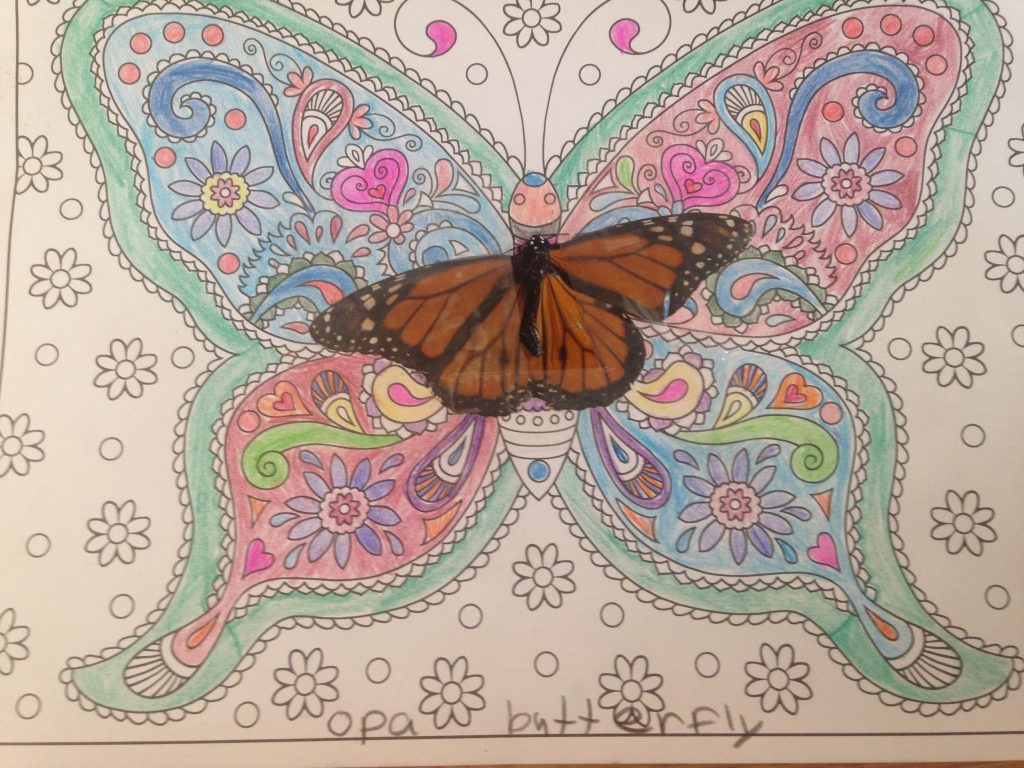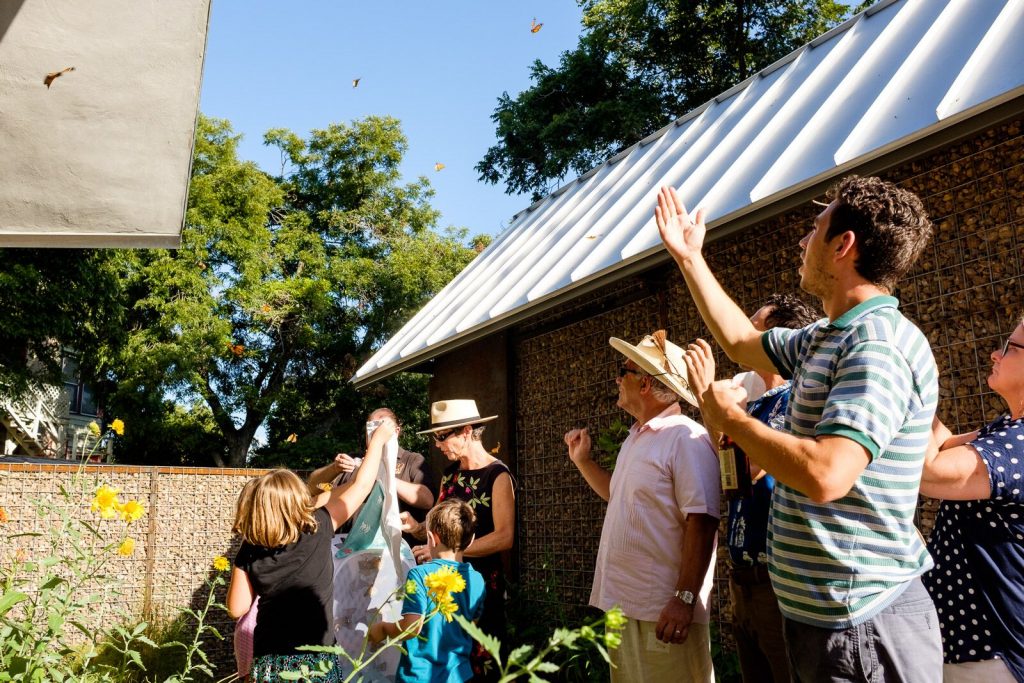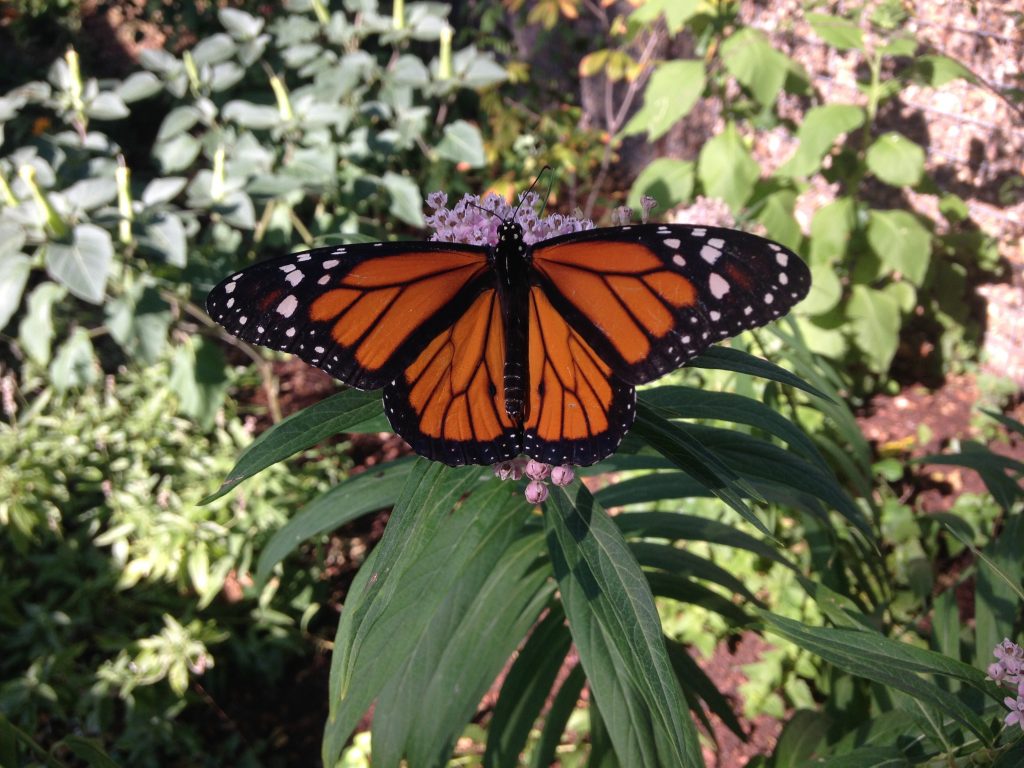My 93-year-old father John Maeckle passed away August 2 after a long battle with dementia. An avid hunter and fisherman, “Opa” disdained organized religion even more than politicians and preferred Sundays at the deer lease or the lake over church. He taught me to waterski, fish and garden, to find solace and adventure in the great outdoors, and that “life is full of compromises.”
After serving as a Luftwaffe pilot in the German Air Force and as a prisoner of war in England until 1947, he and my mom Hilde immigrated to the U.S from Germany in 1953 after humble, difficult beginnings in southern Germany. Not unlike migrating Monarchs each fall, they left unwelcoming circumstances to build a better life. My dad become a custom home builder in the Dallas area during the 1960s building boom, supported his family, and sent me to college to become the first Maeckle to ever earn a degree. He and my mom lived the American Dream. Read his full story here.
Given that profile, and my passion for butterflies, our family thought it appropriate to celebrate my father’s life with a butterfly release. A church service or funeral home reception simply wouldn’t fit.
I thought long and hard about it. Some people I respect think that butterfly releases are wrong and I appreciate their point of view.
In our case, a butterfly release was the perfect gesture for celebrating my father’s life. I ordered 93 butterflies from my friends Barbara Dorf and Tracy Villareal of Big Tree Butterflies in Rockport, Texas. I’ve come to know them through my memberships in the International Butterfly Breeders’ Association and the Association for Butterflies. Barbara and Tracy are both scientists and butterfly breeders who follow best practices and run a professional breeding operation.
It was the right move.
Following a poem by our neighbor and renown poet Naomi Nye, a duet sung in German by family opera singers Melinda Maeckle Martin and her husband Robert Martin, and fond memories recalled by family members, we moved from the air-conditioned living area of our downtown home into the late afternoon sun of the butterfly garden.
Each of about 50 friends and family received a healthy Monarch butterfly in a glycine envelope–the same type of envelope Dr. Lincoln Brower used to store butterflies when he came to visit the Texas Hill Country during the horrific 2011 drought.
The rest of the butterflies were safely secured in a pop-up cage (actually a converted laundry hamper) until the appropriate moment, which in this case, was the finale of our gathering. Following Robert Martin’s beautiful baritone rendition of the German version of Taps, we released the butterflies. On the count of three, in German: “Eins, zwei, drei!” off they went.

The return of Monarchs return to Michoacán, Mexico, early each November made indigenous peoples believe their ancestors were coming home to visit. Courtesy photo.
Ooos and ahs filled the yard as guests aged six to 82 marveled. The Monarchs lilted on guests’ shirts and shoulders, danced on Cowpen Daisies and milkweeds, and drifted around the yard in their dreamy flight pattern–floating, flitting, fleeting, like so many old souls. You could easily understand why the indigenous peoples of Mexico thought Monarchs were their ancestors returning to visit each fall for Day of the Dead in early November.
“It was better than any church service,” said my 82-year-old mother Hilde.
Because I have a magnificent butterfly garden with plenty of nectar sources including five different types of milkweed, the Monarchs have stuck around. One week later, I’m still enjoying a half-dozen of them, nectaring on late summer blooms.
I’ve gathered dozens of eggs and found several first instar caterpillars, too. In fact, my partner Local Sprout founder Mitchell Hagney and I hope to raise the caterpillars and offer them as Milkweed and Monarch rearing kits at a future pop-up plant sale in about a month. I can’t imagine a better way to honor my father and celebrate the life cycle. Opa would approve.
Upon considering writing this post, I revisited some of the negative press on butterfly releases. They “turn butterflies into baubles.” They might “mess with the migration” or “pollute the gene pool.”
It’s true that a handful of shoddy breeders have damaged the commercial butterfly breeding business by sending unhealthy livestock out into the universe while ignorant customers take the blame for mishandling precious butterfly livestock. Here’s a tip for a successful butterfly release: Read the handling instructions and don’t leave live butterflies out in the blazing sun while you touch up your wedding make-up, people.
For those of us who know what we’re doing and which breeders are reputable, I cannot fathom how any of this can be bad or wrong.

“Opa butterfly” collage by family friend Nola Grace Hamilton Garcia, age 8, assembled at Opa’s gathering. Photo by Monika Maeckle
Fifty people who had never thought twice about butterflies have now had a tactile experience with them and will view them forever differently. My niece and nephew Amara, 8, and Alaric Martin, 6, and good friend Nola Grace Hamilton Garcia, 8, chased butterflies around the yard for hours following the release, completely enchanted and forever touched by them.
Conservationists will tell you the most effective path to protecting a species or an ecosystem is engagement. A butterfly release does that.
“A physical connection is absolutely crucial to getting people to care about something,” said Jim Lovett of Monarch Watch, the citizen scientist Monarch butterfly tagging and advocacy organization based at the University of Kansas. “You’ve got to have face time with the species.”
As for speculative claims that thousands of commercially raised butterflies released into the ecosystem will “pollute” the gene pool, there’s no evidence of that to date. And the numbers just don’t add up.
One source close to the industry said an internal survey of breeders suggested fewer than 250,000 Monarch butterflies are released each year around the United States–less than a half a percent of the 57 million Monarch butterflies that migrated last year.
On top of that, those butterflies are released at different times and dispersed throughout the 3.8 million square miles of these United States. As Dr. Chip Taylor of Monarch Watch has said repeatedly, “Releases, in the present form, are a minor issue but they sure generate a lot of heat.”
But this post is not meant to argue that point. It hopes to celebrate the life cycle we all share. And to acknowledge, as my wise father would often say, that “life is full of compromises.” In this case, the engagement with butterflies and the resulting embrace of their conservation far outweigh the unproven risks claimed by butterfly release detractors.
Related posts:
- $300K Awarded to UTSA to study Monarch Butterfly, Inventory Texas Milkweeds
- IH 35 to Become Pollinator Corridor for Bees, Monarch Butterflies, Other Pollinators
- Endangered Species Act: Wrong tool for the Job of Monarch butterfly Conservation?
- Tropical milkweed: Ok for Monarch Butterflies, “Just Cut the Dang Stuff Down”
- Wildly Successful: Pollinator Powwow Draws Hundreds from Texas and Beyond
- Monarch Butterfly Numbers Plummet: will Migration become Extinct?
- NAFTA Leaders, Monsanto: Let’s Save the Monarch Butterfly Migration
- What does climate change mean for Monarch butterflies?
- Monarch butterflies: the Panda Bears of Climate Change
- Persnickety Texas Native Milkweeds Pose Challenges for Growers
- Texas Butterfly Ranch Native Texas Milkweed Guide
- Monarch Butterflies: the Panda Bears of Climate Change?
- A Year in the Life of a Mostly Native Urban Butterfly Garden
Like what you’re reading? Follow butterfly and native plant news at the Texas Butterfly Ranch. Sign up for email delivery, like us on Facebook, or follow us on Twitter, @monikam.





Monika what a glorious tribute to your beloved Opa, and an equally beautiful written piece. I love you, my friend.
Thanks so much, Monika. A wonderful story!
You have done an amazing thing. I have never heard of a church doing anything like this. Truly work done in the name of the creator…you are RAINBOW WARRIOR
That’s really special, Monika. What a marvelous idea, very meaningful. Thanks for sharing.
love this, and you are right ….opa would have approved xx
Thank You Monica for this spot on articulate article. I am printing out this article and including it in my will papers. What a perfect thing to do to honor someone after their passing here on earth and to engage the next generations by planting seeds of the importance of nature. You made me well up.
As an aviator I am sure he really enjoyed seeing all those wings taking flight.
a fine article… remind’s me of the famous Chinese fable, somehow (pure association, perhaps) “Once upon a time, I, Chuang Tzu, dreamt that I was a butterfly, flitting around and enjoying myself. I had no idea I was Chuang Tzu. Then suddenly I woke up and was Chuang Tzu again. But I could not tell, had I been Chuang Tzu dreaming I was a butterfly, or a butterfly dreaming I was now Chuang Tzu? However, there must be some sort of difference between Chuang Tzu and a butterfly! We call this the transfromation of things.” (Palmer-Breuilly translation, Arkana, 1996)
Beautiful!
What a beautiful tribute to your Dad. I am sure he would have been happy. I spent 2 yrs in Germany with the US Army and just loved the people.
Hochachtungsvoll, Darrell
Hi Monika,
What a wonderful article. From the heart and fairly presented.
My dear friend Paula Bruno left us unexpectedly Wednesday. She would love this!! Thanks for an excellent read.
Here in Austin, Texas, Last night I saw a Luna Moth ! WOW ! It was Gorgeous. I felt so Fortunate. I was trying to capture it in a pic on my phone. However, it didn’t work. I even put a flashlight on it to get a pic and I wasn’t successful. Thank you for your website , offering this info.
The link to Big Tree Butterflies does not appear to work anymore… do you have any suggestions for other reputable breeders in Texas?
last August, my only son died suddenly. He was 5 years old.
We are marking the year anniversary soon, and I would love to do a Monarch release. he loved butterflies and I feel like they have been coming to me often this past year…
thank you…
Check the International Butterfly Breeders website, https://www.internationalbutterflybreeders.org/
Good luck!